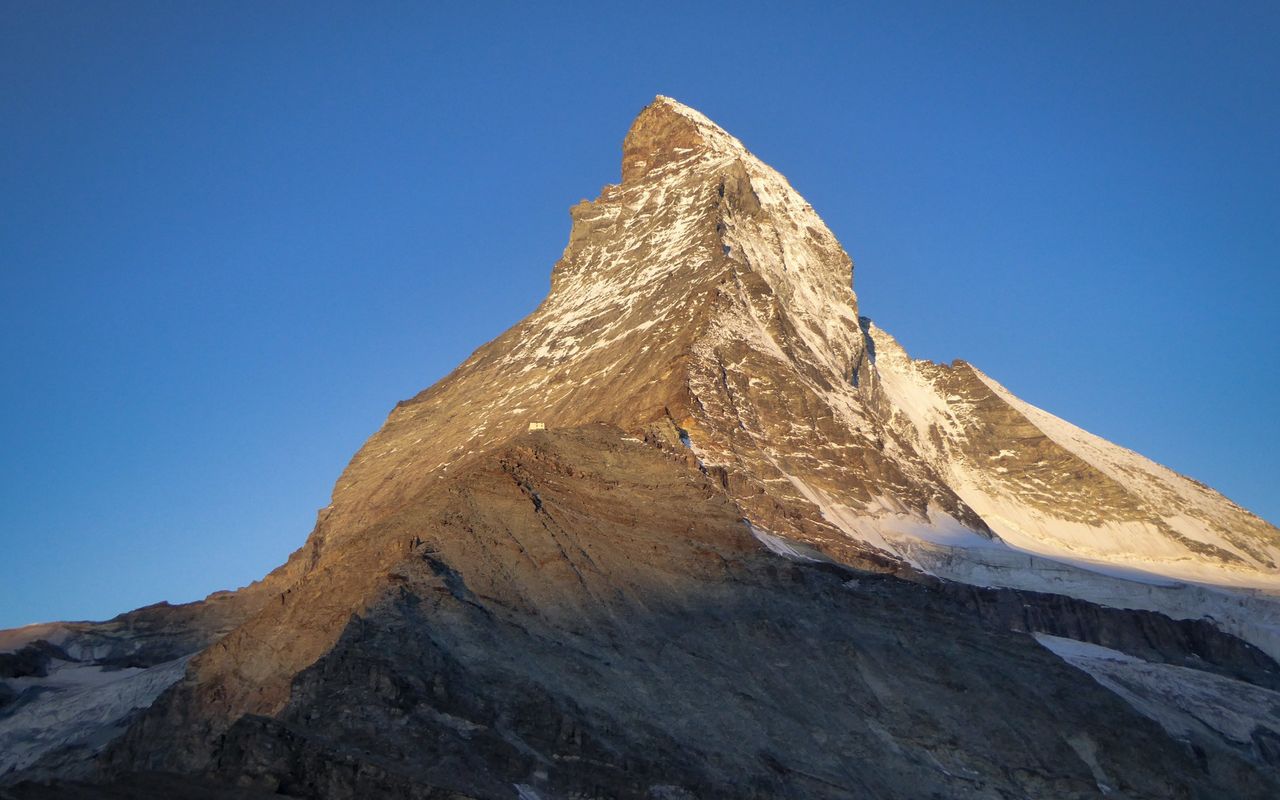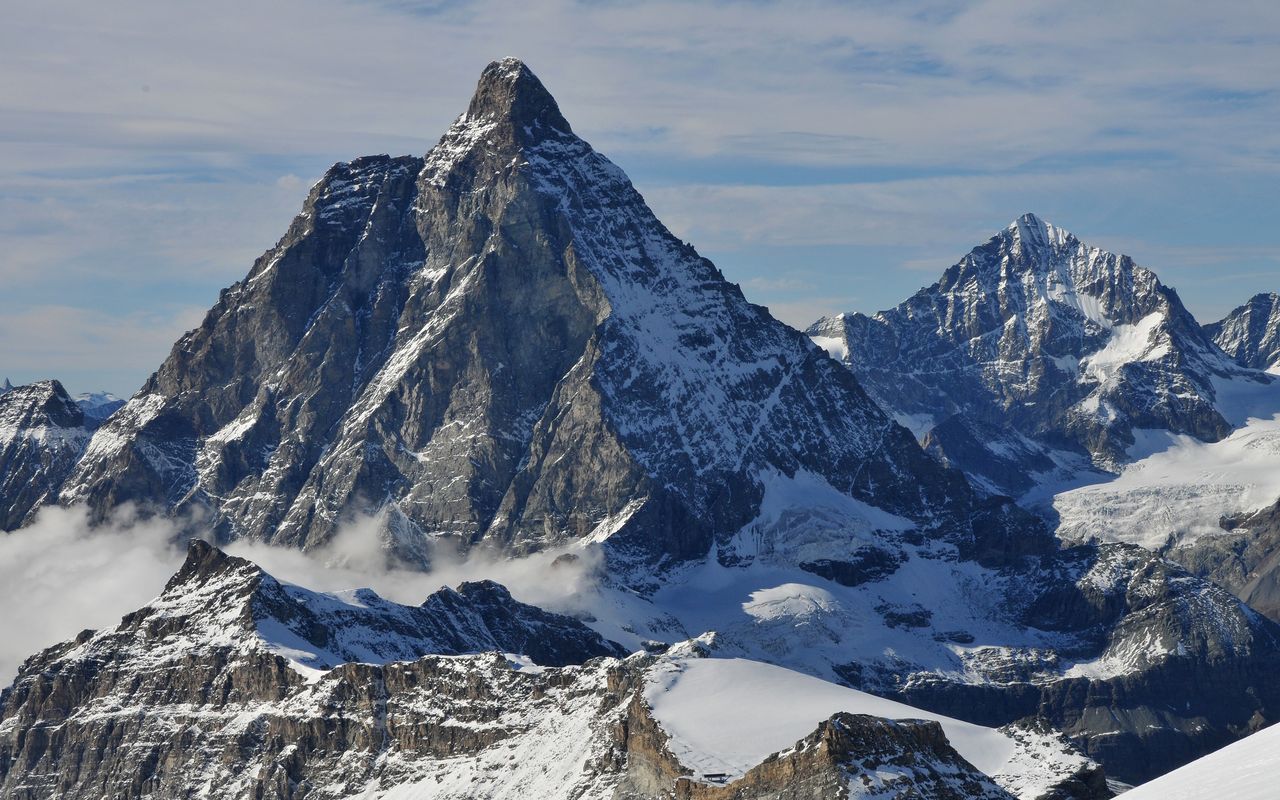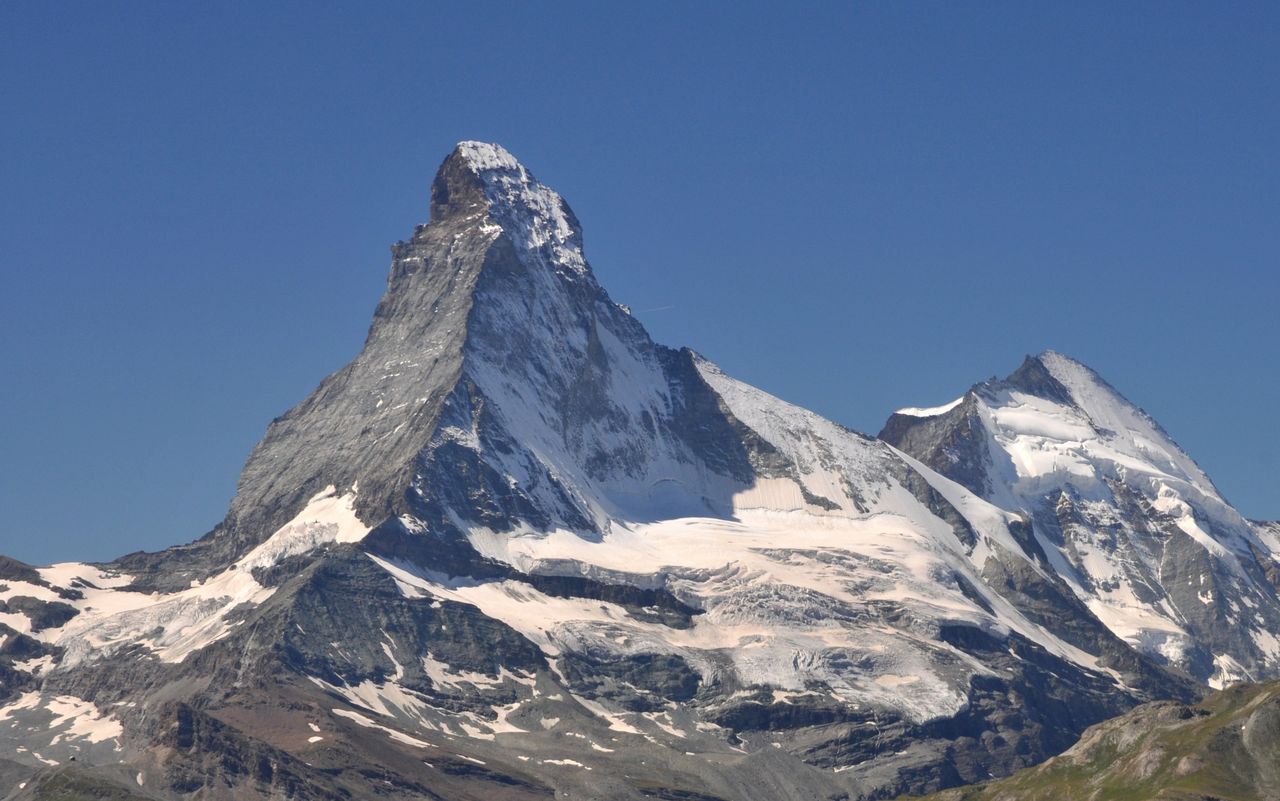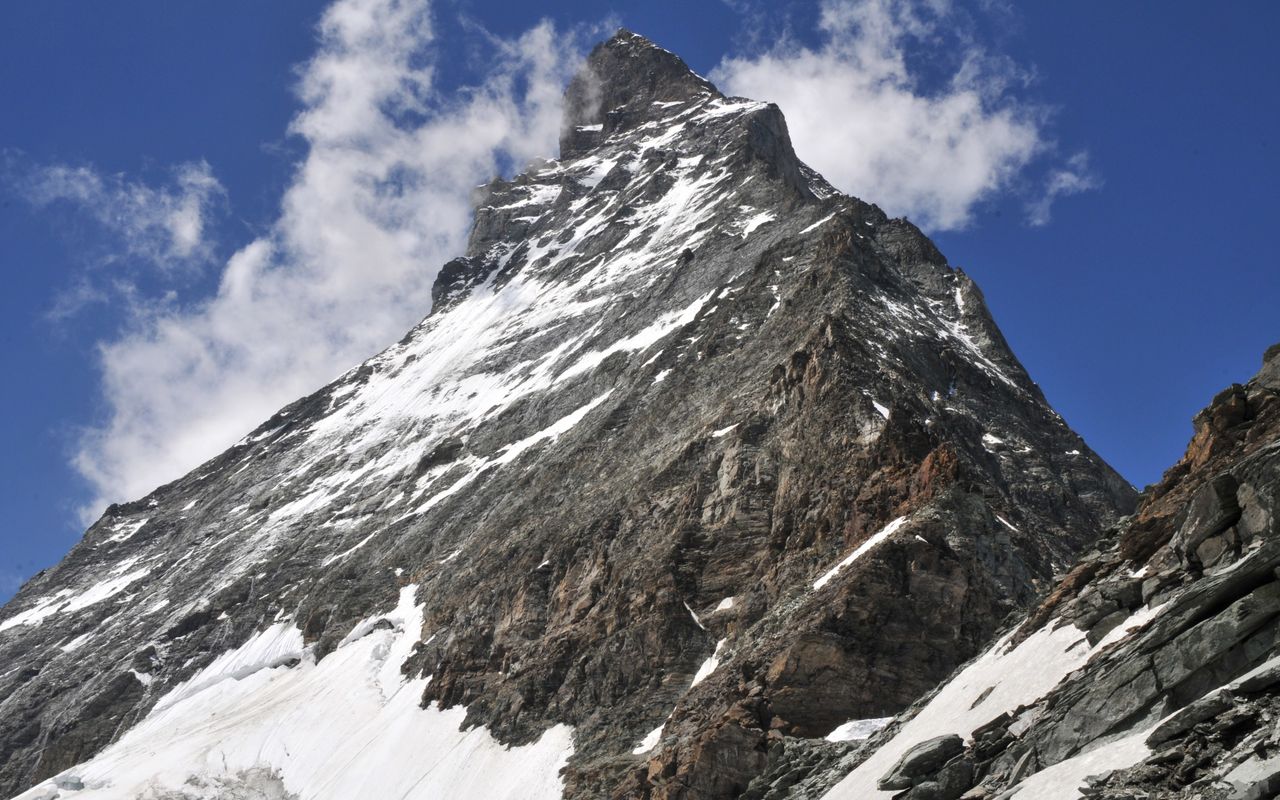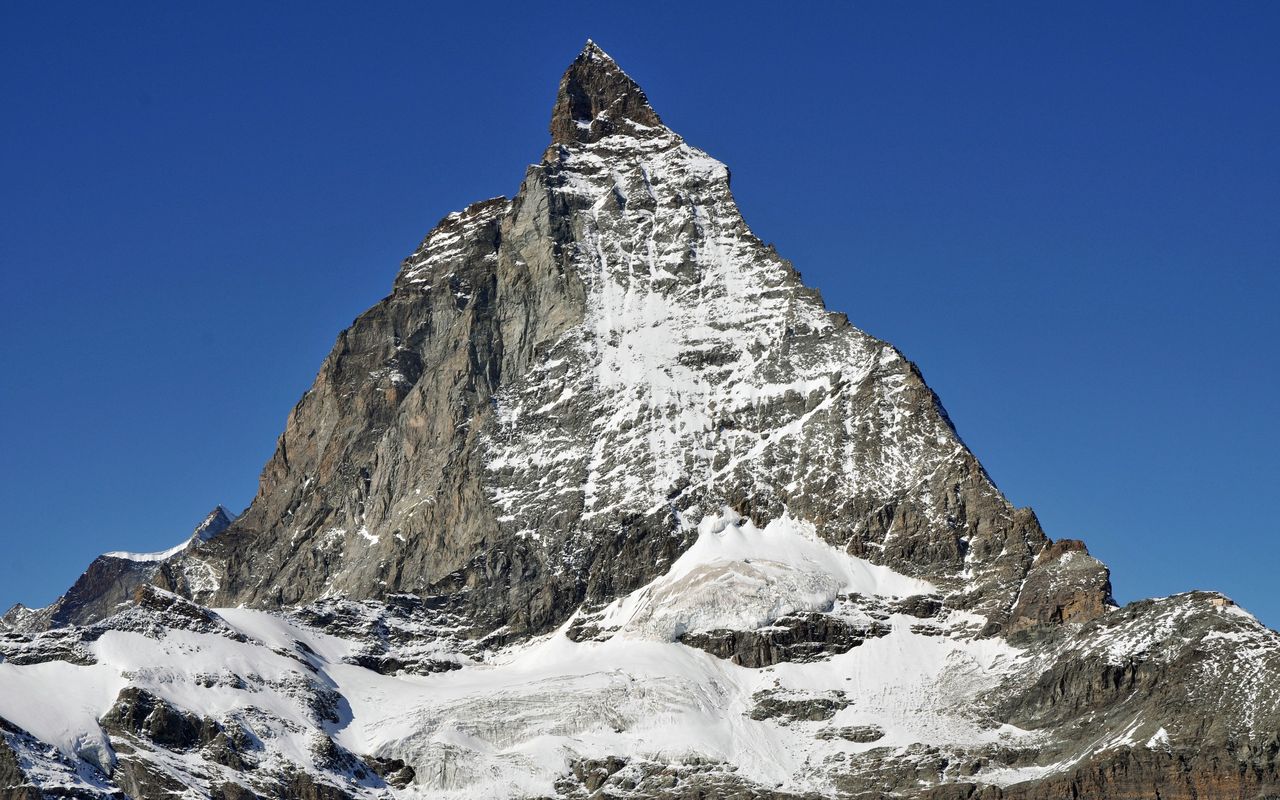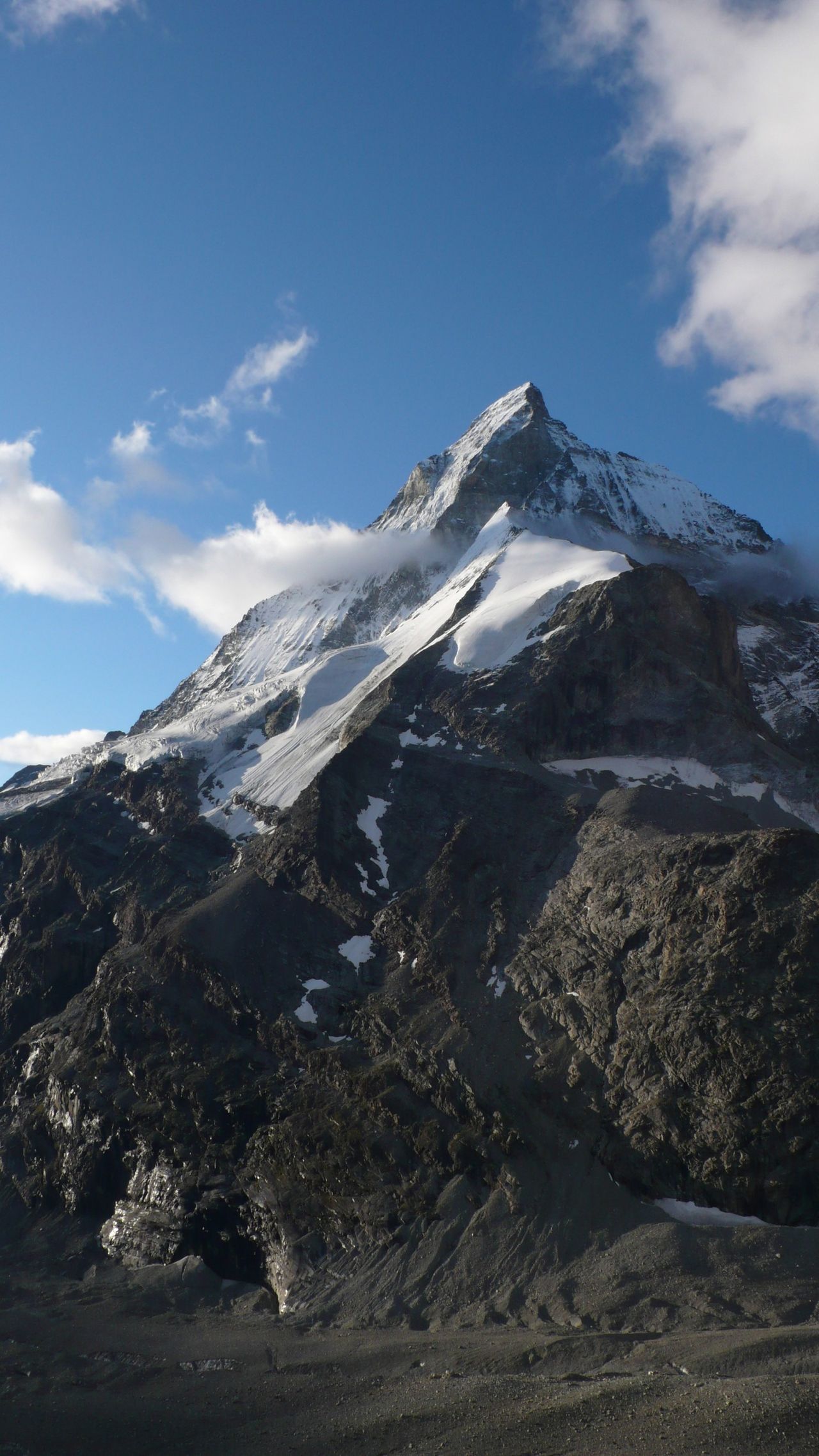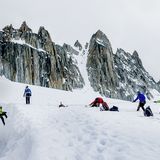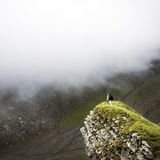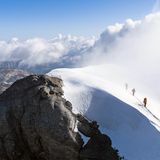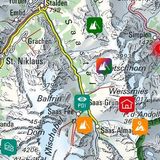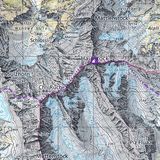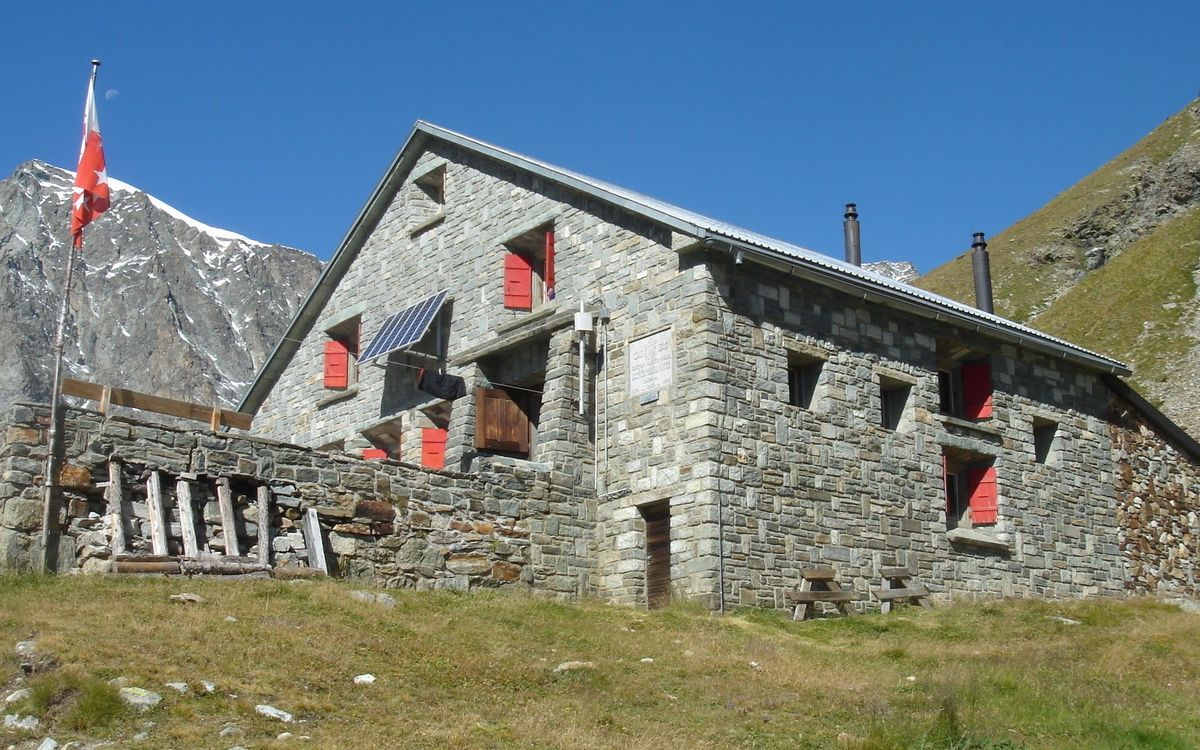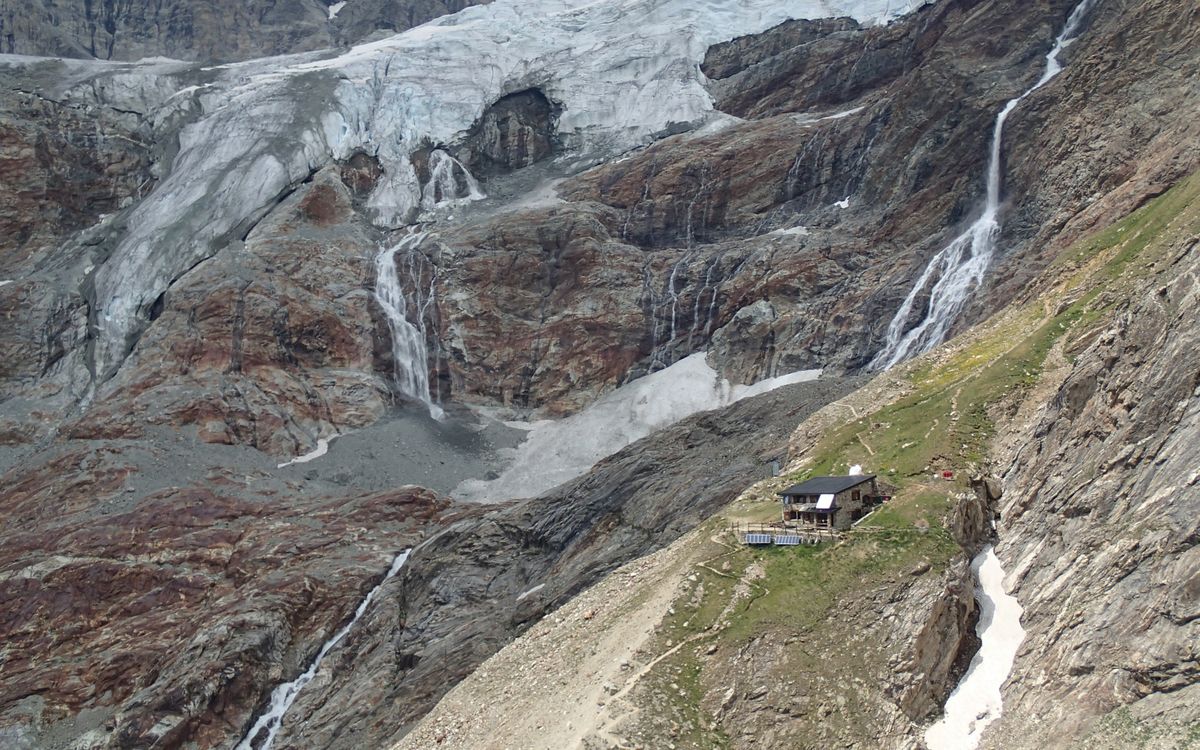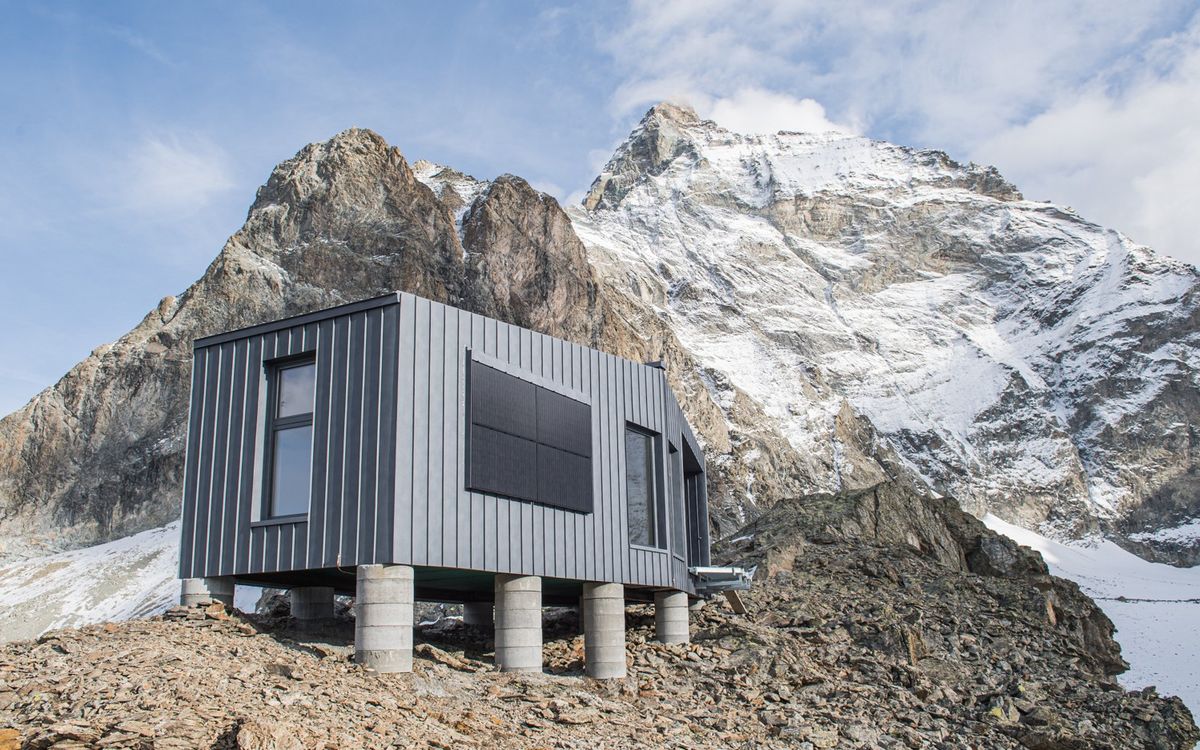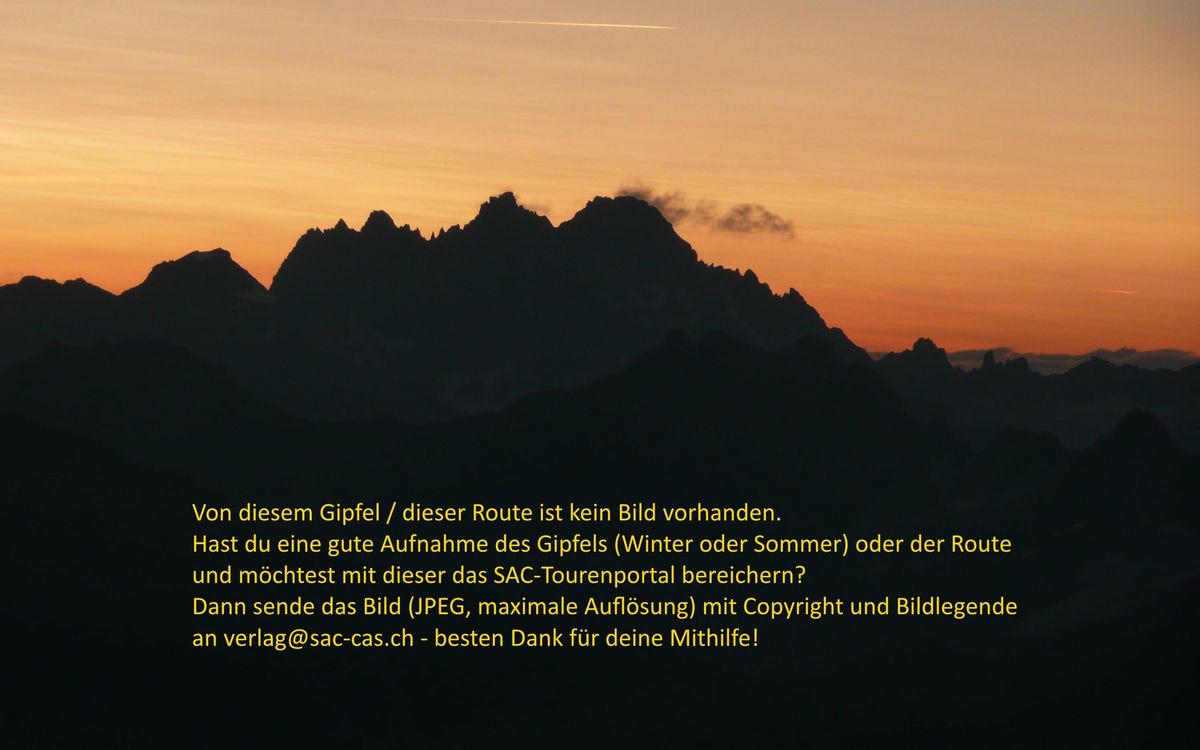Matterhorn 4478 m Route archive
Matterhorn / Monte Cervino / Mont Cervin / ts'Hore or ts'Horu / Becca / Cerveing The vagaries of the ice ages and the unstoppable shear forces of the glaciers transformed the somewhat brittle rock of the Matterhorn into a magnificent rock pyramid. The mightiest obelisk in the Alps was created from a piece of the African plate that was pushed up and over the Eurasian plate. There is no comparable mountain in the Alps and very few in the rest of the world. The very aesthetic, absolutely unique, steep shape of the Matterhorn is greatly enhanced by the fact that it stands completely isolated. The Matterhorn has four ridges and four walls. A summit ridge about 80 m long, interrupted by a 25 m deep notch, with two measurement points: 4478 m (the Swiss summit) and 4477 m (the Italian summit). The national border runs from the Breuiljoch over the Furggengrat, the summit ridge and the Liongrat to the Testa del Leone. The Hörnli and Zmutt ridges are located entirely in Switzerland.
The attraction of the Matterhorn is huge. Both alpinists and non-alpinists are attracted to this mountain in a way that is absolutely magical. In addition to the incredible shape, the dramatic events during his first ascent are of course one of the most sinister chapters in mountaineering history. The then only 25-year-old Whymper climbed the Matterhorn via the Hörnligrat (NE ridge) on July 14, 1865 in a party of 7. Four members (Hudson, Hadow, Douglas and mountain guide Croz) of this very young and somewhat inexperienced rope team, thrown together quite spontaneously, fell on the descent and were killed. All ridges and walls were then gradually dealt with, with the most prominent climbers inscribed on the lists of first climbers. As befits a mountain of this size, the Matterhorn is serviced by numerous huts and bivouacs.
The purely technical difficulties of climbing the Matterhorn are to be classified in the middle range, which is why less experienced mountaineers often dramatically and sometimes negligently underestimate it. The normal routes (Hörnligrat and Liongrat) are definitely recommended for experienced, well-trained alpinists in good physical condition. The weather often changes very quickly on this isolated obelisk. After rain and snowfall, the conditions are sometimes extremely difficult and very delicate. Then there are problems with orientation, which can escalate quickly (sometimes even in good conditions). Add to this the respectable length of all climbs and the inevitable fact that the tour does not end on the summit. All of these dangerous factors need to be considered by any who dare to dream of an ascent.
On the Hörnligrat there is a refuge (Solvayhütte SAC, 4003 m). Please heed the following remark: The Solvayhütte is a small emergency bivouac, which offers six people protection. It is intended for mountaineers who climb difficult routes such as the north face and are surprised by darkness or bad weather during the descent. This bivouac was by no means created for untrained people who, thanks to this accommodation option, still want to "conquer" the Matterhorn by any means over several days. Even in the event of a sudden change in the weather, it is better to get off immediately without relying on the bivouac. Many a sudden change in weather has turned into persistent bad weather, brought a lot of fresh snow and made descent during the ensuing days impossible. There is an SOS telephone in the Solvayhütte with which mountain rescue can be reached.
